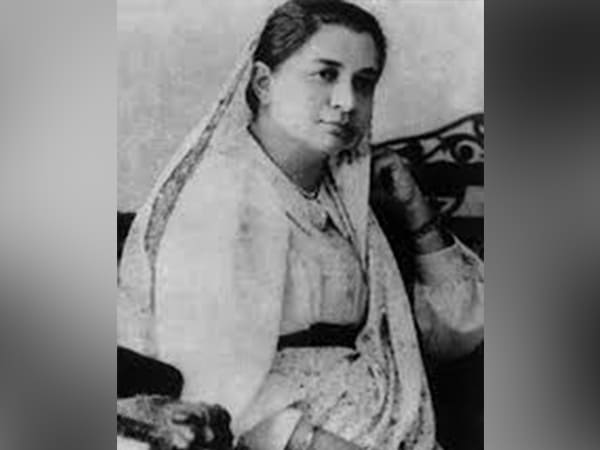Early Life and Association with Indian Nationalist Movement
Bhikaiji Cama was born on September 24, 1861, in Bombay to a wealthy Gujarati Parsi business family of Sorabji Framji Patel and Jaijibai Sorabji Patel. Her early education was in Bombay. And, like several other Parsi girls of her time, she also went to the Alexandra Native Girls' English Institution.
From an early age, she was influenced by the Indian nationalist movement and was drawn toward political issues. She married Rustomji Cama, a well-known lawyer, on August 3, 1885. Her association with socio-political issues was not well received by her husband.

Activism and Association with Freedom Movement
In October 1896, a famine hit Bombay, followed by bubonic plague, which severely affected the life of the people. Bhikaiji Cama helped in providing care for the affected people and she actively participated in inoculation by involving with one of the groups in Bombay's Grant Medical College. While helping the affected people, Bhikaiji herself contracted the plague. Although she survived disease, the severely weak Bhikaiji then went to Britain in 1902 for medical care.
Indian revolutionary leader Shyamji Krishna Varma founded "Indian Home Rule Society" (IHRS) on February 18, 1905, with the active support of several Indian nationalists like Dadabhai Naoroji and Singh Rewabhai Rana in Britain. Bhikaiji also supported the IHRS for promoting the cause of self-rule in British India. While in London, she was allowed to return to India provided she abstained from the nationalist movement. But she declined to sign it, and in 1905, she moved to Paris. In 1905, she co-founded the 'Paris Indian Society', as a branch of IHRS, together with Munchershah Burjorji Godrej and S. R. Rana.

Unfurling of Indian Flag on Foreign Land
On 22 August 1907, Bhikaiji Cama became the first person to unfurl the Indian flag on foreign land during the International Socialist Conference in Stuttgart, Germany. Brave Bhikhaiji hoisted the Indian flag in front of hundreds of delegates from across the globe and termed it as the 'Flag of Indian Independence'. This flag was among the many templates considered in designing the present national flag of India. The same flag was later smuggled into British India by independence activist Indulal Yagnik. The fag is presently showed at Pune's 'Maratha' and 'Kesari' Library.
Revolutionary Works
While in exile, Bhikaiji met notable nationalist leaders and wrote revolutionary works for the national movement and printed them in Switzerland and the Netherlands. In Paris, her work 'Bande Mataram' was created with regard to the British ban on 'Vande Mataram'. In September 1909, the 'Paris Indian Society' started its operation. In 1909, she found another publication journal 'Madan's Talwar', named after Indian revolutionary independence activist Madan Lal Dhingra.

Return to Motherland
At the beginning of the First World War in 1914, France became an ally of Britain. Hence, most members of the 'Paris India Society' left France, but Bhikaiji stayed back. In October 1914, Bhikaiji was kept under arrest for a while as she attempted to incite the Punjab Regiment troops in Marseilles. She was asked to leave Marseilles and went to Arcachon. The French government sent her to Vichy in January 1915, and she was kept under confinement. In November 1917, due to a worsening health, Bhikaiji was allowed to return to Bordeaux with the condition to report to the local police on a weekly basis. She returned to her Paris home after the war ended. In 1935, she suffered a stroke, and she was paralysed. She made a petition to the British government via a member of the Bombay Parsi community Sir Cowasji Jehangir to return to her motherland.
Bhikaiji returned to India in November 1935, along with Jehangir. On August 13, 1936, the fearless revolutionary who played an important role in India's freedom struggle from far Europe, she succumbed at the Parsi General Hospital in Bombay, British India.

Legacy of Bikhaiji Cama
She donated a major chunk of her personal assets to the Bai Avabai Framji Petit Parsi Girls Orphanage and also a substantial amount to Framji Nusserwanjee Patel Agiary, her family's fire temple located at Mazgaon, in South Bombay.
To honour Bikhaiji, many streets and places in India are named after her. In 1962, the Indian Posts and Telegraphs Department issued a commemorative stamp in her honour on the 11th Republic Day of India. In 1997, the Indian Coast guards commissioned ICGS Bikhaiji Cama to commemorate her selfless service for the cause of independence.



 Click it and Unblock the Notifications
Click it and Unblock the Notifications
















